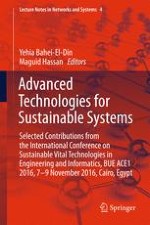This book reports on cutting-edge technologies that have been fostering sustainable development in a variety of fields, including built and natural environments, structures, energy, advanced mechanical technologies as well as electronics and communication technologies. It reports on the applications of Geographic Information Systems (GIS), Internet-of-Things, predictive maintenance, as well as modeling and control techniques to reduce the environmental impacts of buildings, enhance their environmental contribution and positively impact the social equity. The different chapters, selected on the basis of their timeliness and relevance for an audience of engineers and professionals, describe the major trends in the field of sustainable engineering research, providing them with a snapshot of current issues together with important technical information for their daily work, as well as an interesting source of new ideas for their future research. The works included in this book were selected among the contributions to the BUE ACE1, the first event, held in Cairo, Egypt, on 8-9 November 2016, of a series of Annual Conferences & Exhibitions (ACE) organized by the British University in Egypt (BUE).
